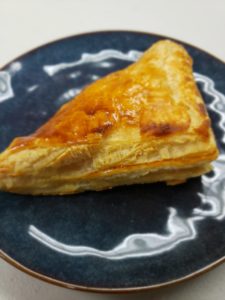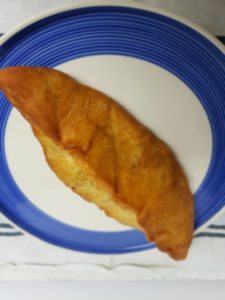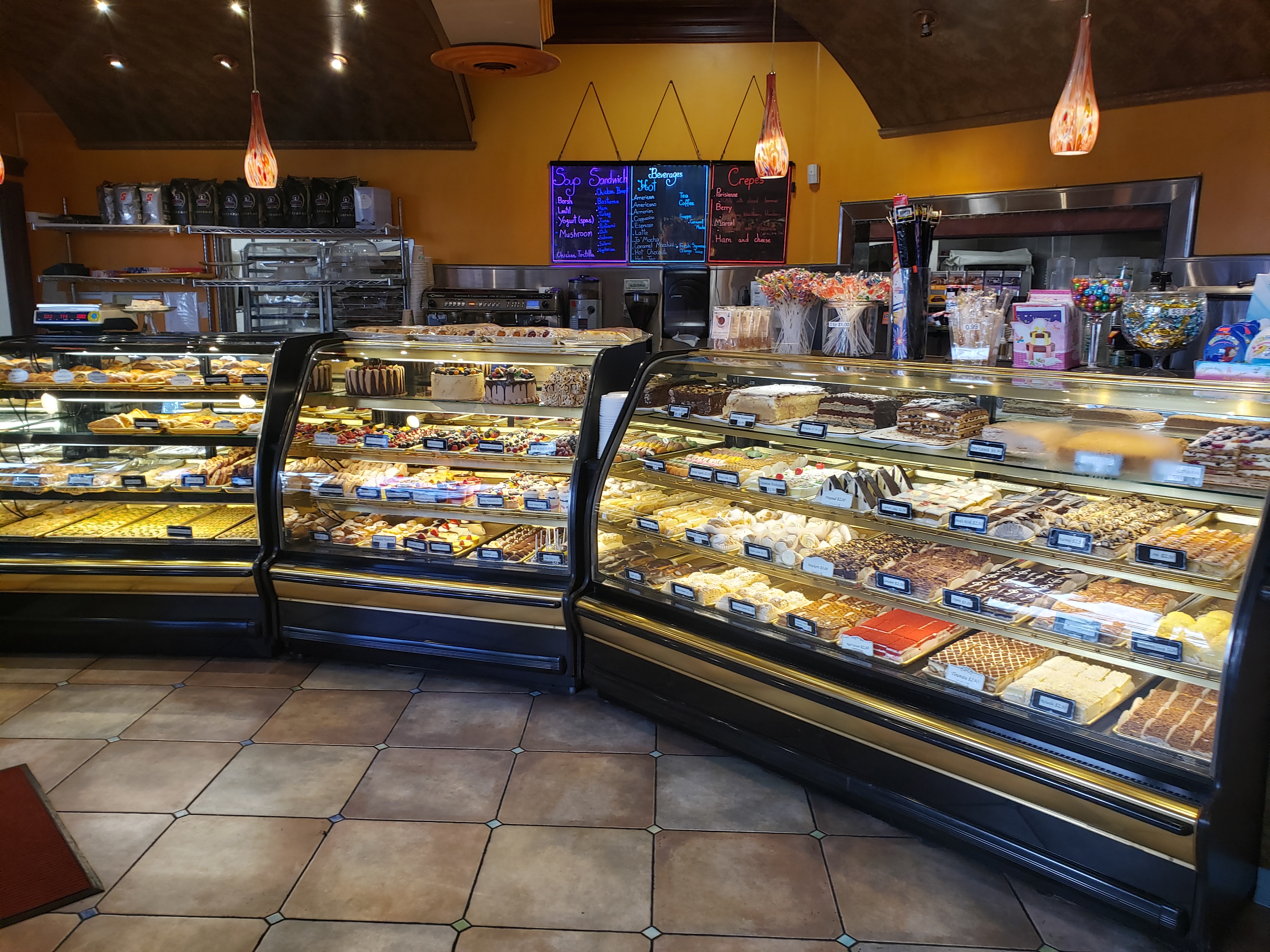Situated firmly near the 101 freeway on Santa Monica Boulevard in Little Armenia is Kavkaz Plaza, a familiar neighborhood pillar since 1988. It’s the home of Kavkaz restaurant, Café Paris, and Karabagh Meat Market. The owners of the plaza are John and Helen Danielian, Armenian immigrants who came to America some 27 years ago.
As John and I talk about bread, kebabs and the like, our conversation traverses a wide range of countries and seemingly different cuisines, yet we never deviate from the core phrase “Armenian food.”

(Danny Palumbo)
It’s no secret that Armenian cuisine has influences from all over — Russia, Lebanon, Turkey, Georgia, Iran, Azerbaijan, all a well-known result of a displaced people following the Armenian genocide.
When one says “Armenian food” in L.A., it’s often difficult to grasp what exactly they’re talking about. They could mean the Lebanese-Armenian fare of Zankou Chicken and Carousel, or they could be referring to the Russian-Armenian and their proclivity for fried bread and beef pelmeni.
Kavkaz itself is a term used to describe the Caucasus — the area between the Black and Caspian Seas. Maybe that’s the unhyphenated word that would provide the most clarity. The plaza does have a specific Russian and Georgian influence and less of a Beirut or Turkish style — it’s Kavkaz.
Karabagh Meat Market is an absolute gem if you’re looking for an introduction to Kavkaz provisions. You’ll find a wide array of specialty cut meats and fish but dig a little deeper and you’ll see the simply stated fish salad — a causa-like dish that’s layered with potato, shredded beets, sour cream, green onions and pickled herring. The label printed out reads “miscellaneous” and it feels as such.
Now might be as good as time as any to pick up some halva, the sweet and crumbly tahini-based dessert is dirt cheap ($3 a pound) and wildly addictive. Pick up homemade beef pelmeni from the freezer, a can of kvass (malty, rye soda), or the ready-to-eat shashlik kebabs of chicken and beef that are marinated and spiced with herbs. Discover the joys of the long, unleavened, tear-with-your-hands lavash bread which beseeches you to take it home with prepared dips and spreads.

(Danny Palumbo)
Lavash bread should be everywhere in the American kitchen, by the way. It’s good with eggs, grilled meats, and just about any emulsion. If you don’t look at lavash and feel some sort of inspiration in the kitchen, your imagination is lacking. Karabagh is a great place to sample the wide scope of Armenian cuisine, while not straying too far from the familiarity of the Caucasus.
Next to Karabagh Meat Market is Café Paris, which immediately staggers you with a wide plastic case of decadent pastries like gooey and sultry baklava that is sticky to the touch, cream cheese puffs, cherry tarts, many iterations of brittle filo dough, and intricately layered cakes.
Everything is so precisely decorated and presented by the cafe’s army of bakers you’ll see roaming in and out of the kitchen. As good as the pastries are, don’t sleep on the array of savory stuffed breads available.
The jangyal bread, whose etymology I can’t find anywhere, is packed with cooked spinach and dill. The bread is soft and blistered, and it contrasts nicely with the pleasantly tart greens.
The piroshki is a massive, golden football of fried dough stuffed with beef or cabbage. The bread is formidable, dense, and filled with fat from frying oil. Try their version of xachapuri (spelled khachapuri elsewhere)– a delightful puff pastry made from filo and again stuffed with meat or cheese.
The stuffed breads at Café Paris are humble — cheap, filling, and most importantly delicious. You’ll find it strangely addicting to have a coffee with your morning cheese bread.
I ask John, “Would it be a pain in the ass if this place became popular?” “Yes,” he answers immediately while contently puffing on a cigar in the empty patio in the early morning of Café Paris. “I don’t want any more business.”
For a second, I try to imagine a line of people waiting for piroshki. It gives me anxiety, and I have nothing to do with this place. In between puffs John graciously suggests that I take home a loaf of bread, and I am told that this particular style, which is Georgian, is his favorite.
One of the bakers walks over to our table and puts the bread, which is warm and shapeless, directly in my hands. He insists I tear off a piece right now, and it is delightfully chewy.
An employee puts it in a plastic grocery bag so I can tie it around the handlebars of my bike. Throughout the day, I make a point to finish the entire loaf of bread. It’s that good. I gnaw on its in-between activities — after I walk my dog, in between watching episodes of Fleabag, after I get home from a haircut.

Cafe Paris. (Danny Palumbo)
I eat it with tahini paste, sometimes with olive oil and salt, but often times just plain. Sometimes when I chew a piece, I can hear this distinct smacking sound, like gum, due to the little air pockets spread throughout.
This bread, like lavash, is best when it’s torn with your hands. It wouldn’t make sense to cut it with a knife. Even though I’m eating it alone, there’s something very communal happening. I’m starting to imagine a big table of people tearing the bread and passing it around at dinner. I myself want to be at that table.
Armenian food is, by its very nature, inclusive. It is a unity of cultures and practices that are meant to be celebrated, not debated. You can try to pin it down with particulars, but you’d be wasting your breath. Kavkaz plaza is an excellent reminder that culture itself is never static. It’s not some neat package of uniformly sliced Wonder bread; It’s meant to be ripped and shared.
Kavkaz, 5341 Santa Monica Blvd., East Hollywood; (323) 464-2224
Advertising disclosure: We may receive compensation for some of the links in our stories. Thank you for supporting LA Weekly and our advertisers.

